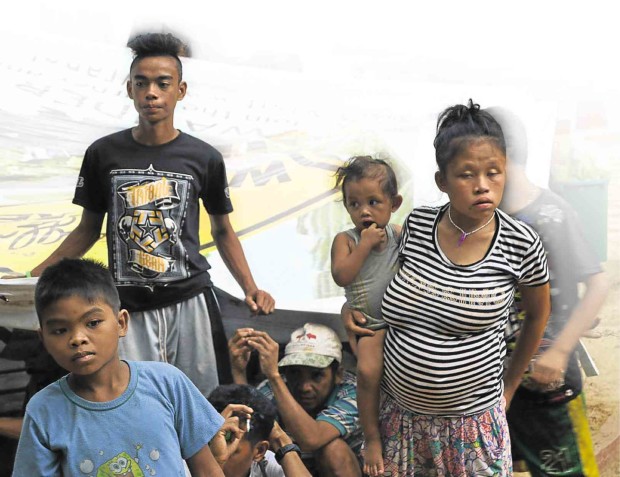Probe of soldiers’ camp in civilian areas set

RESIDENTS of a village in Lagonglong town, Misamis Oriental province, flee to the provincial capitol grounds after soldiers camped out in their communities as part of the government’s counterinsurgency campaign. JIGGER JERUSALEM/INQUIRER MINDANAO
CAGAYAN DE ORO CITY—A group of peace advocates is looking into allegations that government soldiers violated a human rights deal between the government and the communist movement by camping out near civilian communities in a village in Misamis Oriental.
According to residents of Barangay Banglay, Lagonglong town, soldiers from the 58th Infantry Battalion of the Philippine Army’s 4th Infantry Division entered their neighborhood and stayed there for a few days.
Leaders of the residents said the Army encampment violated the Comprehensive Agreement on Respect for Human Rights and International Law (Carhril), a deal struck by the Philippine government with the National Democratic Front of the Philippines (NDFP).
No violation
But Capt. Joe Patrick Martinez, 4th ID spokesperson, said in an interview that the military did not violate the Carhil or any law.
Article continues after this advertisementHe said the soldiers were simply carrying out provisions of another law that put the military at the forefront of the counterinsurgency campaign.
Article continues after this advertisementAccording to Martinez, soldiers would be deployed to wherever communist guerrillas are.
“I believe we did not violate any law but we are just performing our mandate,” said Martinez.
Carhril, which both the communist movement and government accused each other of violating, prohibits blockades, bombings, use of land mines and acts that would lead to forced evacuations, according to the Office of the Presidential Adviser on the Peace Process (Opapp).
Nenita Helogon, secretary general of the tribal group Tagtabolon, said residents of Barangay Banglay had to flee their homes four times for fear of getting caught in the crossfire between members of the New People’s Army, the armed component of the Communist Party of the Philippines, and government soldiers.
At least 218 individuals are now staying at the Lagonglong municipal gymnasium, leaving their homes, livestock and crops behind in Barangay Banglay.
Census
Helogon said the last time the villagers fled was on June 5 when soldiers arrived purportedly to conduct a census. The villagers, however, said the soldiers were fully armed.
Bishop Felixberto Calang, of the Iglesia Filipino Independiente (IFI) and co-convenor of the Philippine Ecumenical Peace Platform (PEPP), said his group would conduct an investigation.
PEPP is at the forefront of efforts to free soldiers and policemen being held captive by the NPA and is one of the groups actively involved in efforts to bring peace talks between the government and communist guerrillas back on track.
Fr. Christopher Ablon, secretary-general of the human rights group, Karapatan, in Northern Mindanao, said his group would also seek a dialogue with the military for the pullout of soldiers in rural communities.
Helogon recalled a commitment made by the military, during a dialogue last year with provincial officials of Misamis Oriental, to keep a distance from civilian populations. Jigger J. Jerusalem, Inquirer Mindanao